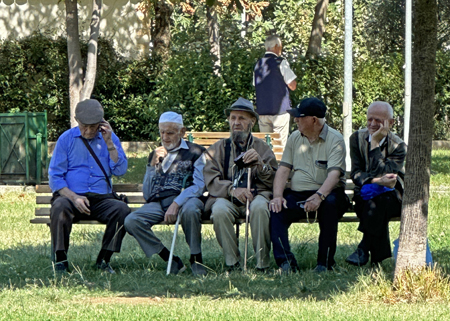
September 26 – October 8, 2023
George W. Bush
For a guy I don’t care for much (or at all), George W. Bush certainly has been a prominent feature in my life recently. You see, the name of the multi-lane street closest to our apartment is Rugga e Barrikadave. We’ve been calling it Dave for short (the Albanian pronunciations are just too challenging).
So, we were quite surprised to learn that our Dave street actually changes names a few blocks down. It becomes, of all things, Rugga George W. Bush. Ugh.
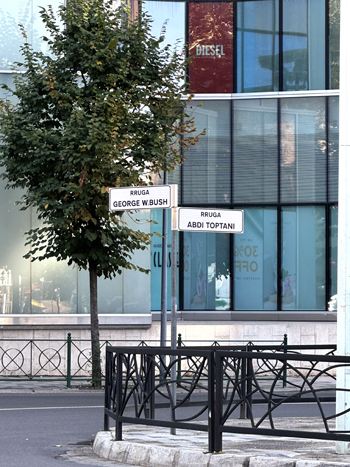
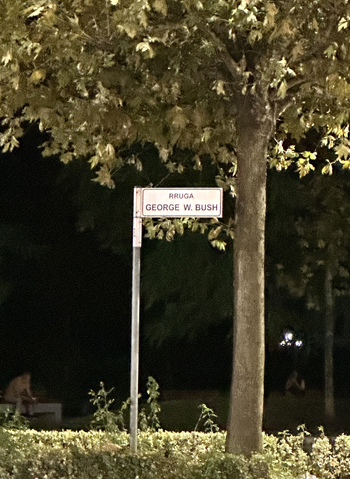
On top of that, I was casually looking out my bus window on a day-trip out of Tirana. And what do I see but a bar named George W. Bush? Then, a block later and I see another building with that name emblazoned across it in big golden block letters.
It’s gotten to the point that I’m not surprised to see W’s name anymore. It appears to be a fixture here in Albania. Why? Well, the Albanians are very grateful to our former president.
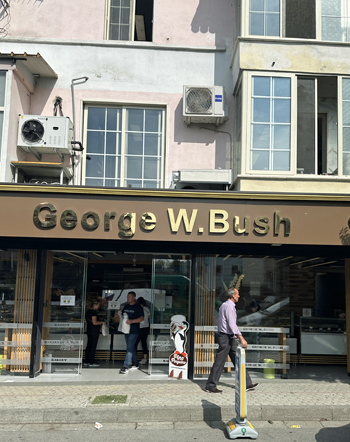
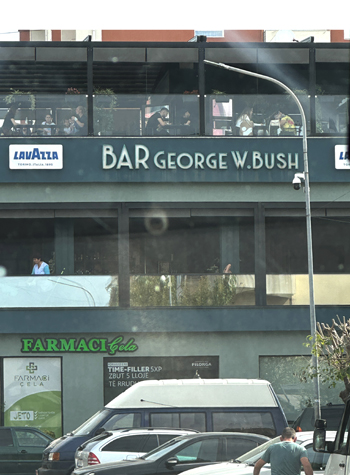
The Albanians have an affection for W and the Americans in general. They’re especially grateful to W for his support in 2007, which ultimately helped Albania join NATO in 2009.
It’s a bit embarrassing that we, as Americans, don’t know Albanian history. Especially when they love us so much.
And I admit, I didn’t have a clue…until now.
The Albanian Past
The Albanian people have lived through tyrannical, repressive, inhumane, paranoid, tortuous, and controlling regimes from the 1920’s through 1991. First with Italian fascists in control, then the Nazis, and finally the Lenin-socialists (communists). And, to make matters worse, for nearly 50 years the country was in extreme isolation (1944 to 1991).
Enver Hoxha, the Stalinist Dictator
In November of 1944, Albania was liberated from the Nazis. They formed a new state called the Democratic Government of Albania, headed by Enver Hoxha as Prime Minister.
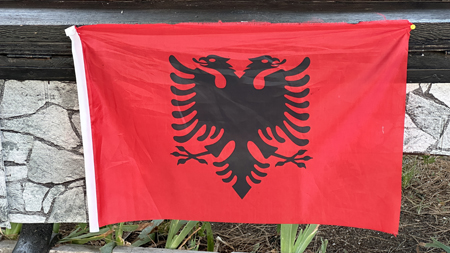
Hoxha immediately established a socialist state. He favored the single-party rule of Albanian communism.
Hoxha proclaimed Albania the world’s first atheist state and proceeded to demolish many historic and beautiful churches and mosques.
Hoxha oversaw some mild economic progress, and he attempted to eradicate illiteracy in the country. But no accomplishments could ever make up for the damage he inflicted on Albania as its autocratic leader.
The Sigurimi (Secret Police)
One of Hoxha’s first acts as Prime Minister was to establish the Directorate of the Defense of the People. Hoxha felt there were enemies everywhere that threatened the nation, both from within and outside the country.
House of Leaves
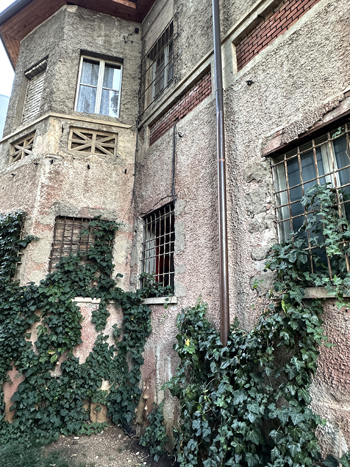
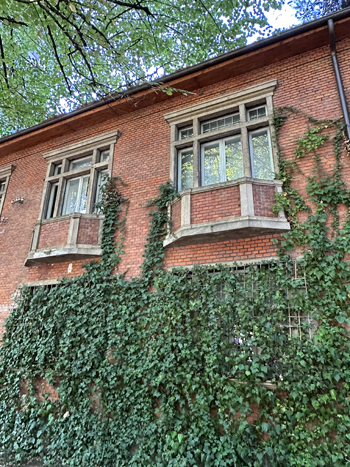
Under Hoxha, the House of Leaves became an Interrogation Center “to protect the nation”. Political enemies were interrogated, tortured, subjected to coercive tactics, and even killed in the central facility.
People were manipulated into spying for the state, both for rewards and to ingratiate themselves with the regime.
Hoxha’s paranoia knew no bounds. Many one-time confidants and trusted comrades were imprisoned and even put to death based on nothing other than Hoxha’s whims.
Surveillance
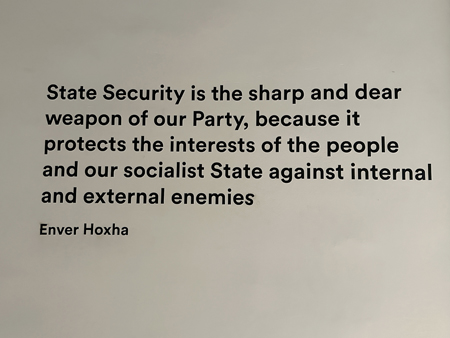
Installing bugs in homes, businesses, stores, and everyday items was common. Nothing was safe from being bugged in order to monitor and root out “enemies of the state”.
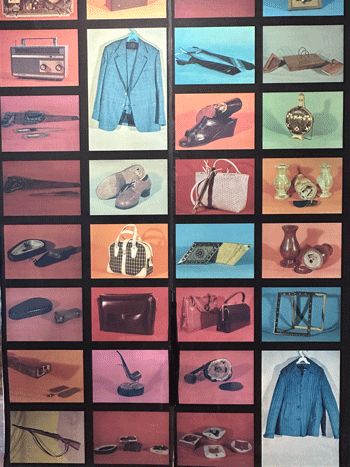
The videotapes of people who lived through the horror of this time were especially powerful. One man recounted how his father was arrested (with no justification), and his family was moved to a new apartment.
They knew the new apartment was full of bugs. Everyone in the family had to monitor their every word at all times for years and years. No one could relax and be themselves, so much so that their very personalities were changed by the experience.
The family lived in constant fear. They knew that even if nothing suspicious was said, almost anything could be twisted and used against them.
Internment Camps
So many people were arrested that the prisons were soon full, so the regime created forced labor camps to house the overflow of “enemies of the state”.
The Hoxha government created 50 internment camps. Thousands of Albanians were imprisoned and forced to work to physical exhaustion and even death.
A Lone Country
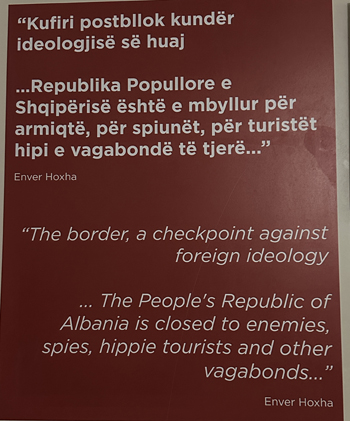
Hoxha was also a staunch isolationist. He felt that any outside influence would be a threat to Albania.
To keep all Albanians inside the country, and anyone from entering, the borders were carefully guarded. The use of specially trained dogs was especially cruel and violent. The dogs hunted down, tracked, and even killed some trying to leave (or enter) the country.
The isolation was very effective. When the country was finally released from the communist grip in 1991, farmers were still using farming methods from the 1920’s. There had been complete isolation for almost fifty years.
The Secret Bunkers
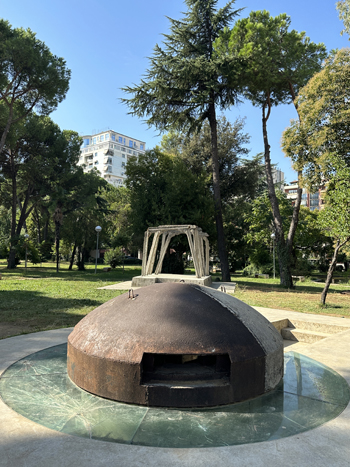
Hoxha’s extreme paranoia led him to believe that Albania was destined for an imminent nuclear or chemical attack. To prepare, he secretly built hundreds of thousands of bunkers throughout the country in the 1970’s and 80’s.
These concrete, often mushroom-shaped bunkers come in various sizes and can still be seen all over the country.
The bunkers were built to last, and are a stark and unwelcome reminder to the Albanian people of a horrible time in their history.
BUNK’ART 1 & 2
We visited two museums in Tirana that were in decommissioned Bunkers, BUNK’ART 1 and BUNK’ART 2.
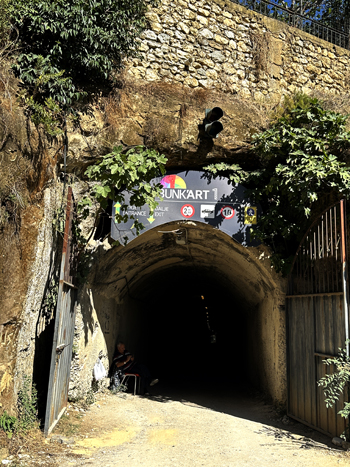
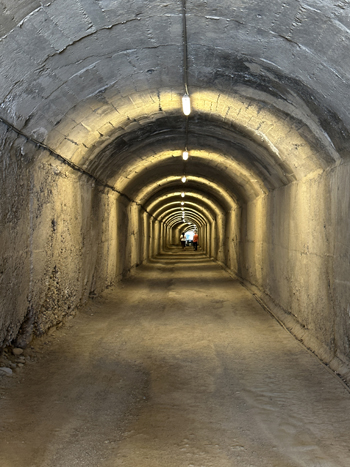
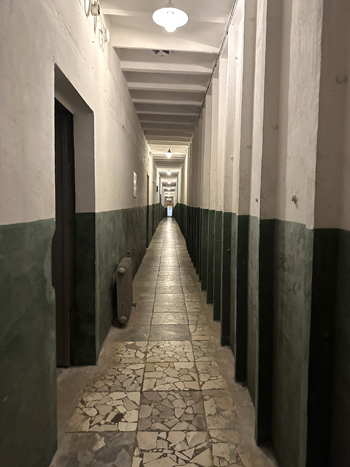
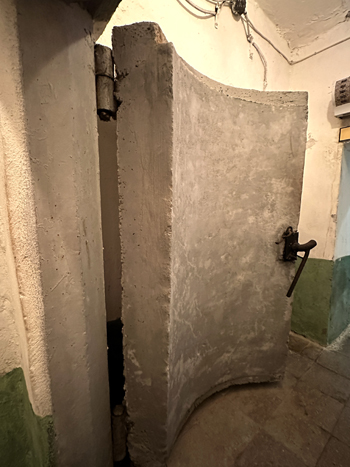
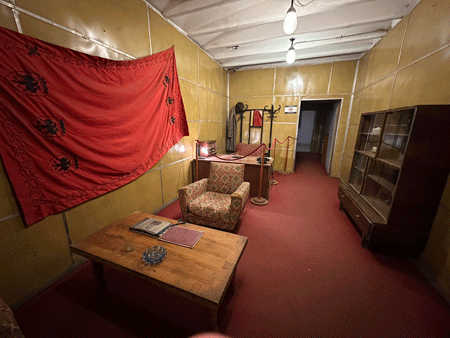
BUNK’ART 1 is Enver Hoxha’s decommissioned nuclear bunker. It runs five stories beneath the surface and has a total of 106 rooms, all within an incredible 32,000 square feet.
All the rooms were dimly lit, cold, and claustrophobic. The rooms also had a chemical smell, most likely something to repel mold in the damp conditions.
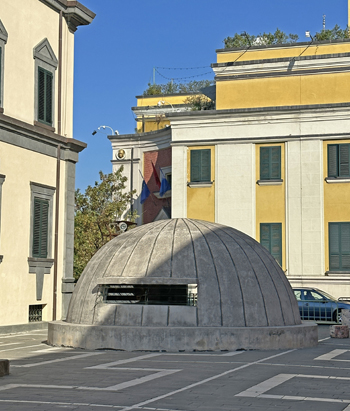
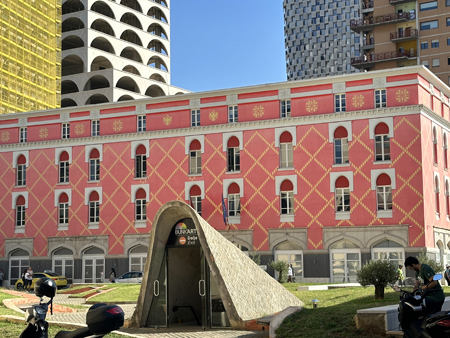
So many resources were poured into creating these never used bunkers. It’s so sad, when the Albanian people were poor and the country was suffering.
An End to Communism
Hoxha was the longest-ruling Communist leader in history at the time of his death in 1985. It wasn’t until a 1992 election which saw the victory of the nation’s Democratic Party that the Communist rule ended.
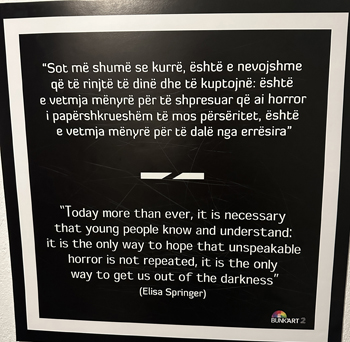
Learning of Albania’s severe and horrendous past was intense. Reading examples of resisters being burned alive, shot, or hung was gut wrenching. Some were women, and some as young as 18 years old.
Visiting the places of interrogation, torture, and death left a pit in my stomach and an almost visceral feeling of dread and terror.
It ended only 30 years ago, and seeing actual video footage of people who lived through the horror made it even more profound.
Zone 1
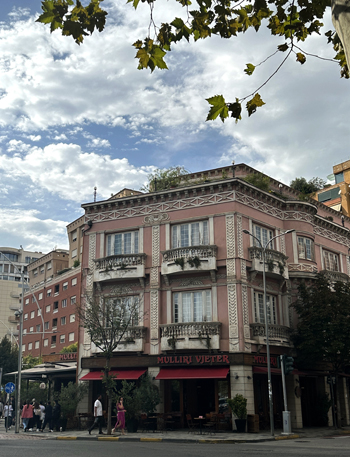
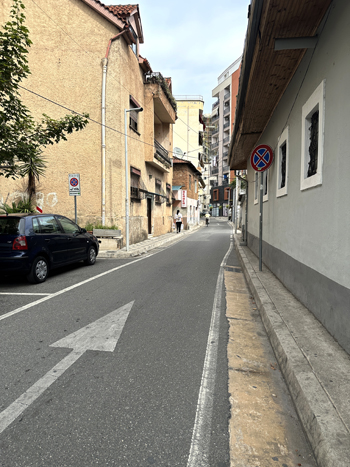
We’re staying in a neighborhood that the guidebooks call Zone 1. It’s always buzzing with activity.
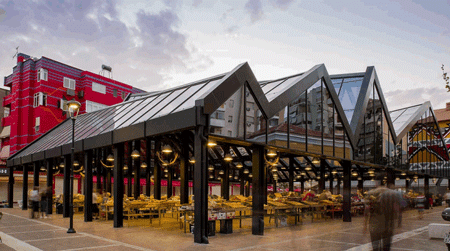
We are near a charming plaza called Pazari i RI, not far from the Skanderbeg Square. Pazari i RI is a pedestrian only area full of small cafes, bakeries, and family run restaurants in a large courtyard that surrounds a modern, covered farmers market.
Between our apartment and Pazari i RI are small alley-like streets with all kinds of small shops, and several bicycle shops too.
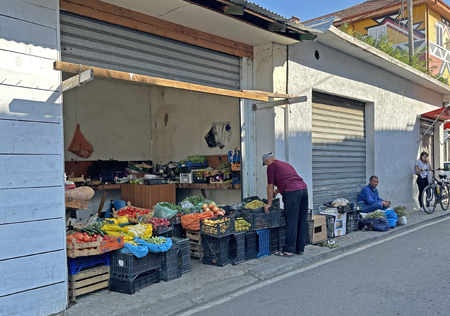
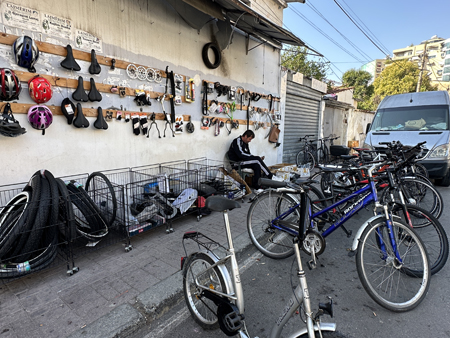

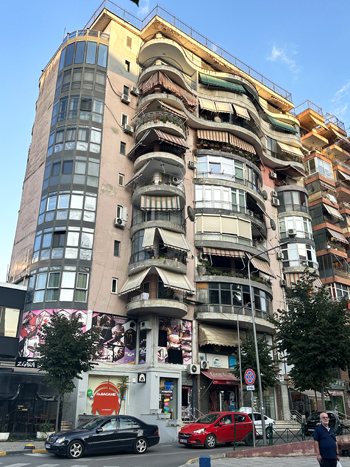
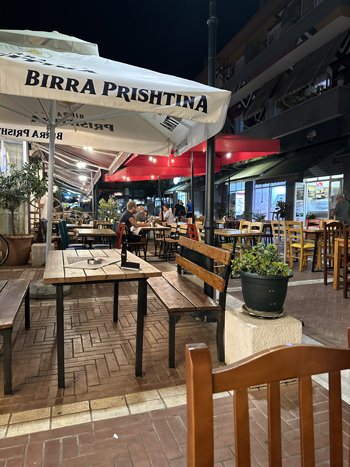
Within a minute or two walking there’s a fairly large grocery store, a baker, a butcher, a pharmacy, a hardware store, a salon, and more. Lots of students clutter the streets in the afternoon when school is let out for the day. And there’s plenty of street art.
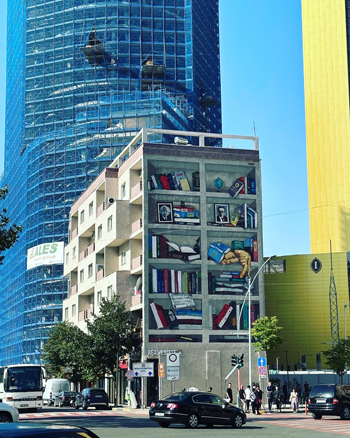
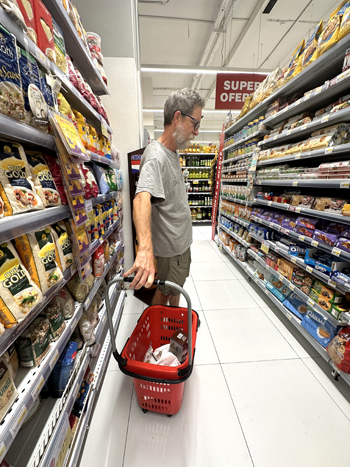
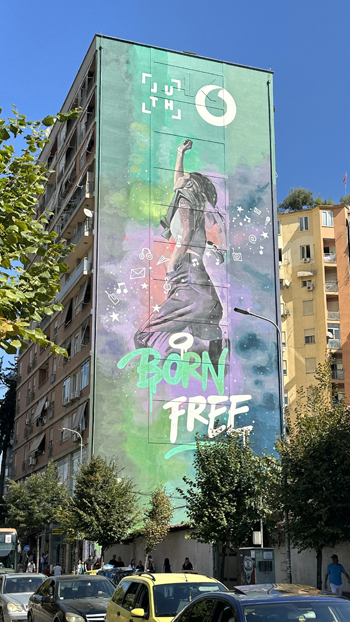
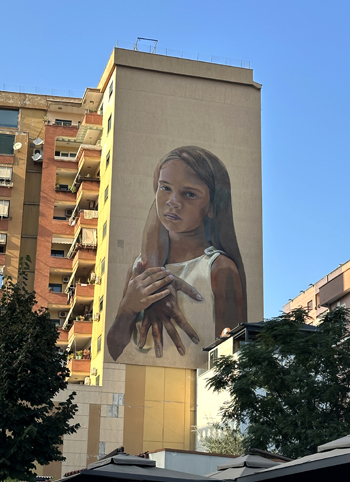
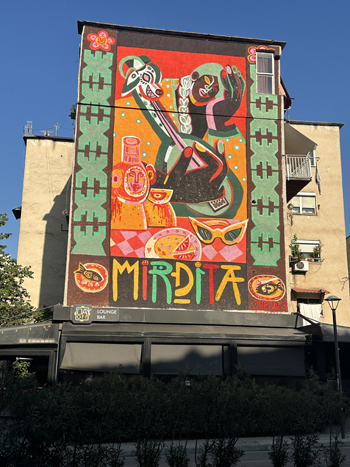
Getting to Know You
I’ve got to say, I really am liking it here. This neighborhood is speaking to me. Maybe it’s because we’ve stayed here for almost two weeks. We feel like we are peeling back the layers and going deeper every day.
We’ve found some local, family run restaurants we really like, and we have our local grocer and bakery too. We’ve been using the local buses successfully (mostly), and feel like we know our way around.
It’s easy to walk anywhere we need to, as long as you know what you’re doing.
The Countdown
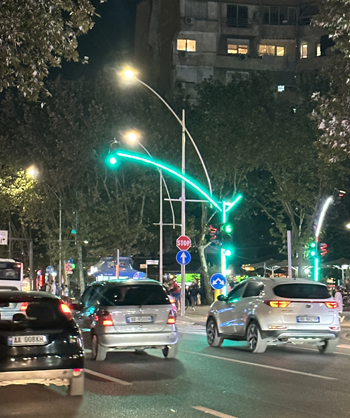
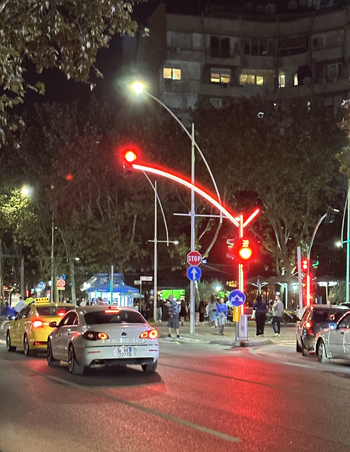
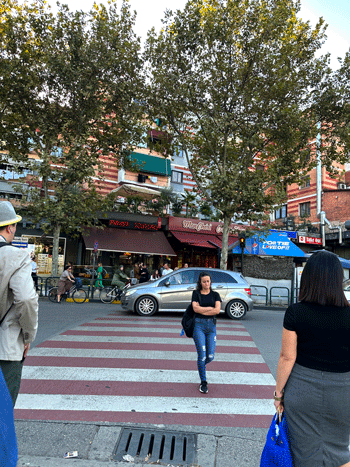
As in any large city, locals stand on the corner and wait to cross the street when the light changes.
As it turns out, it doesn’t matter much if you cross with or against the light because the crosswalk isn’t necessarily a safe space anyway. It’s more like a suggestion of a safe space.
Even with hoards of pedestrians in the crosswalk, cars, and even buses, will push through any slight opening in the crowd. We’ve even seen them pull up so close as to almost touch pedestrians, practically nudging up against the throng of walkers to create an opening!
Alternate Transport
Tirana has an excellent bike lane system throughout the city that is well used. What was surprising was the sheer number of bikes and scooters with electric motors, and just how fast they zip along!
I swear I’ve seen those scooters going 20 or 25 mph. And they are whisper quiet too – so you don’t hear them coming! They rarely yield to pedestrians, and only obey traffic signals when it suits them.
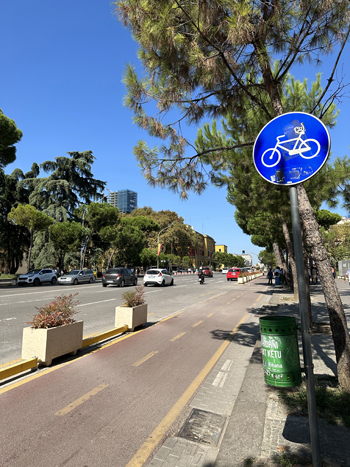
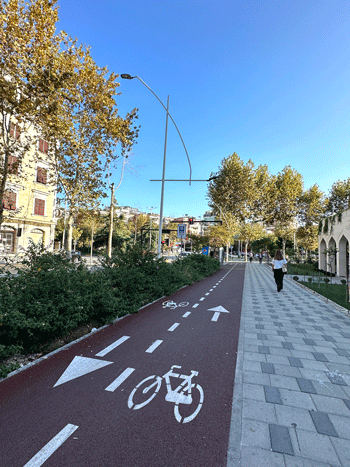
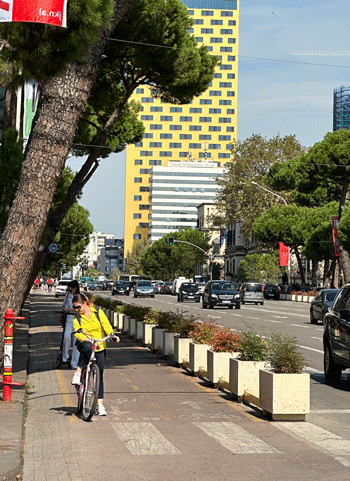
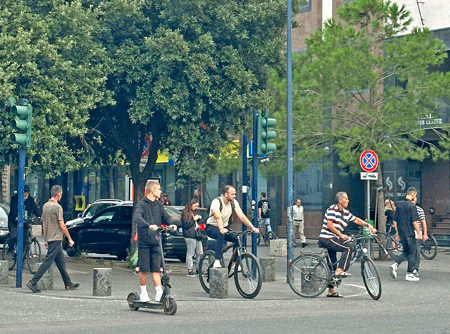
Heading to Skanderbeg Square
At the city center, only a ten minute walk from our apartment, is the expansive Skanderbeg Square. The opera house, the National History Museum, and a statue of Skanderbeg, an Albanian hero, flank the huge tiled square (more on Skanderbeg later in this post).
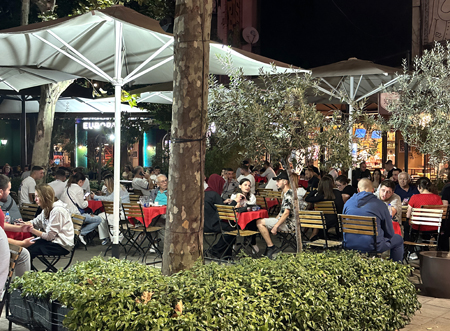
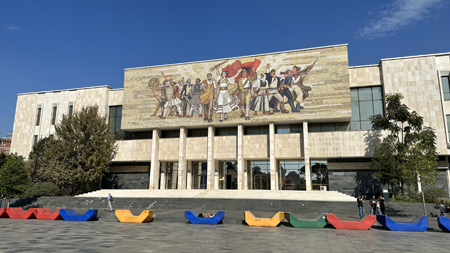
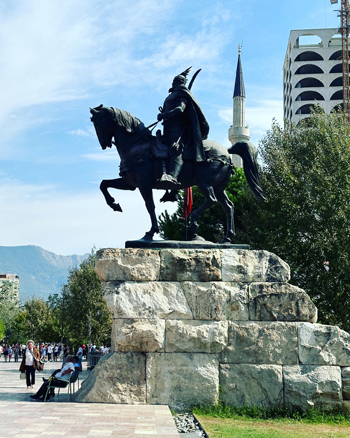
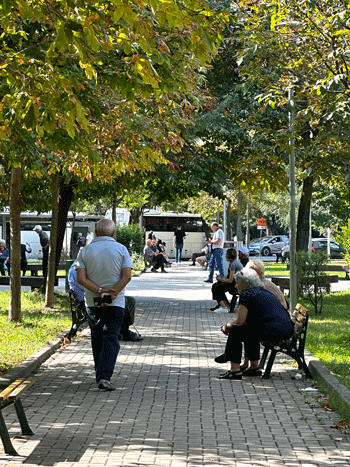
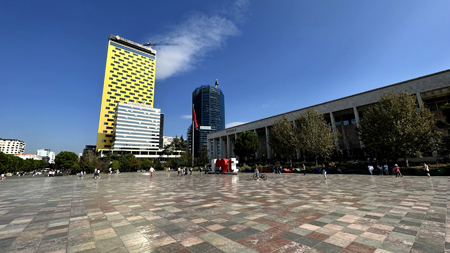
Big & Modern High Rises
Tons of construction is going on everywhere we look. So many of the high-rise buildings around us are architecturally interesting, and obviously quite modern.
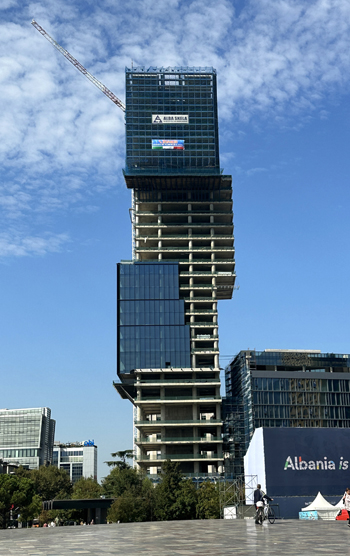
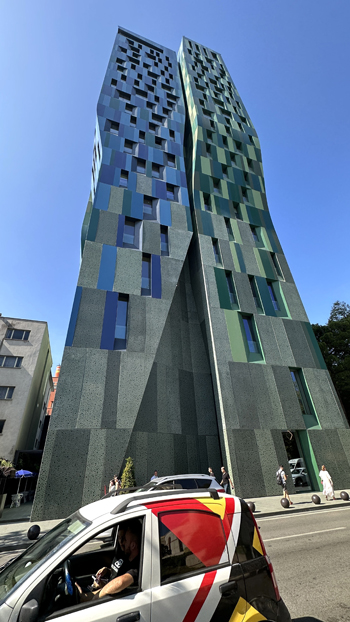
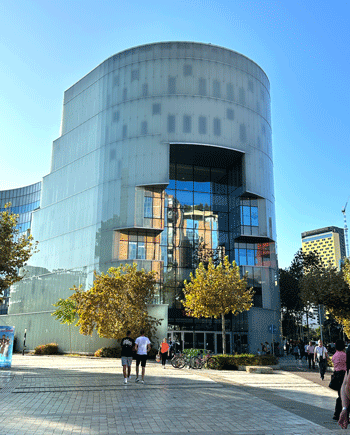
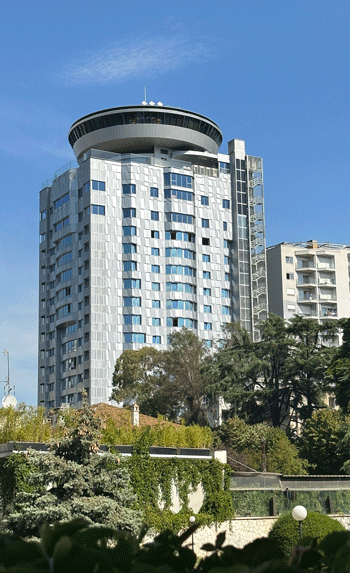
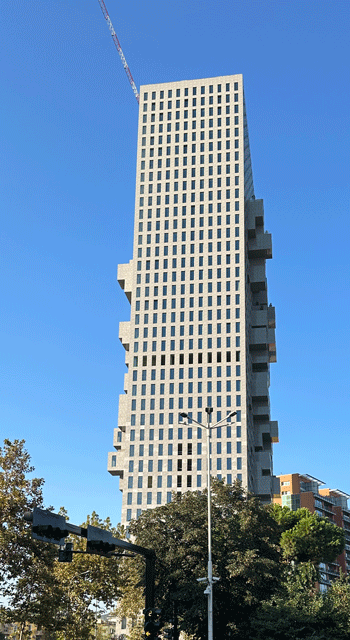
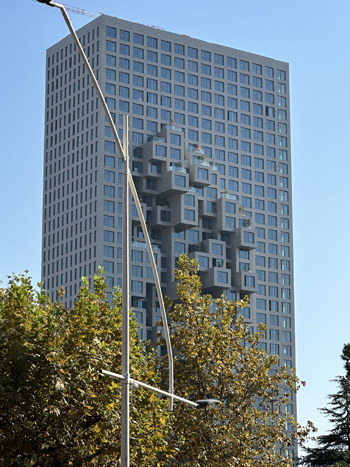
The Toptani shopping mall right in the center of Tirana is a sight to behold. It’s way more modern and fancy than any shopping center back home. Sorry, Alderwood Mall, you just don’t measure up.
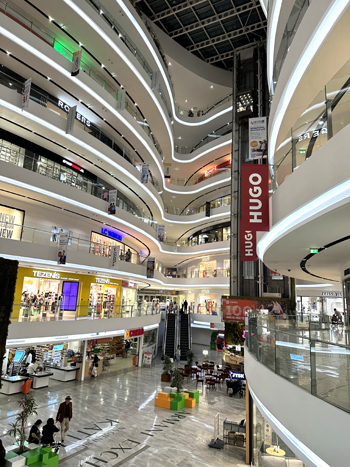
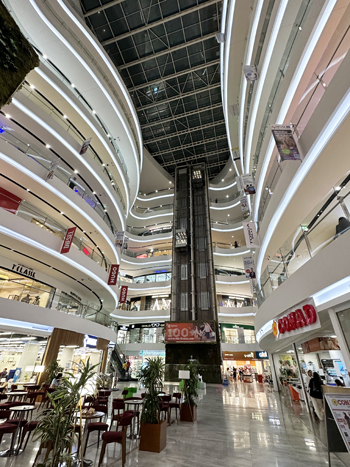
The Cafe Culture
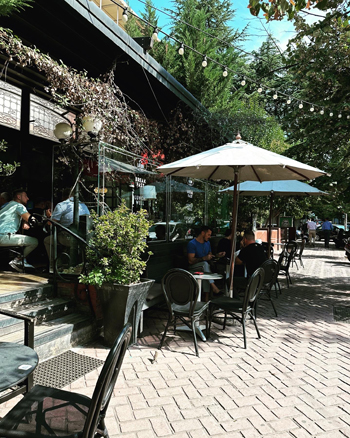
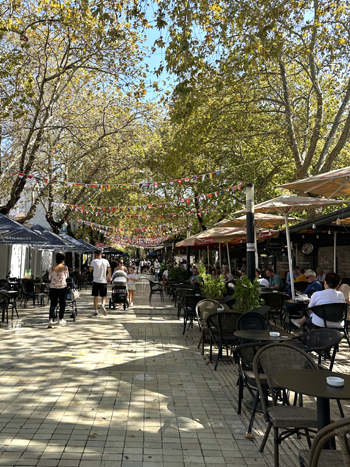
So many cafes. They are always full, from early morning to late into the night. Every teeny espresso is served up with a large glass of water. Unfortunately most people are also smoking cigarettes (yuk).
I’m not sure when all these people eat, but they sure stay caffeinated.
Speaking of Espresso
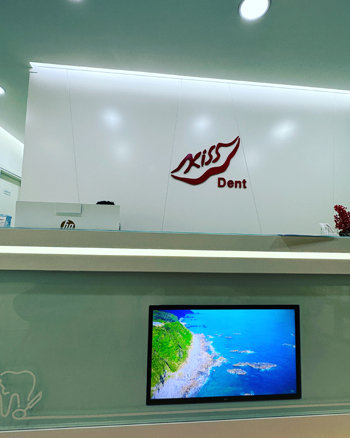
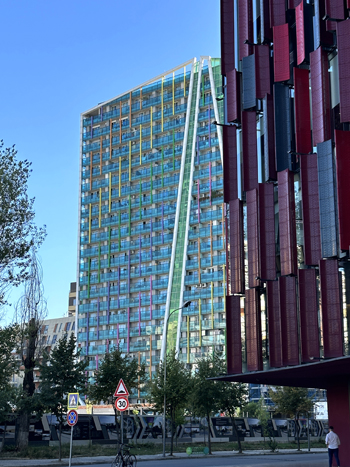
After a thirty minute walk across town, Steve and I finally found the dentist’s office we were looking for. KissDent is in a blue-green modern high-rise full of offices and residences. The doorman was waiting in the snazzy, artistically-lighted entry.
We sat in the small, comfortable, and clean waiting room just across from the receptionist’s desk. The receptionist popped her head up above the counter and asked us if we’d like an espresso while we waited. This was completely unexpected.
My first thought was that there’s no way I could have an espresso. Why, I’d just brushed my teeth to come to this appointment! But, we aren’t in Kansas anymore, Toto. We’re in Tirana, land of espresso.
Dentistry, Tirana-Style
Apparently dentistry is a thing here in Tirana. Everywhere we look we see modern & upscale dentist offices. A friend of mine had highly recommended Dr. Alba at KissDent. She had new veneers done at KissDent a few years back and is still very happy with them.
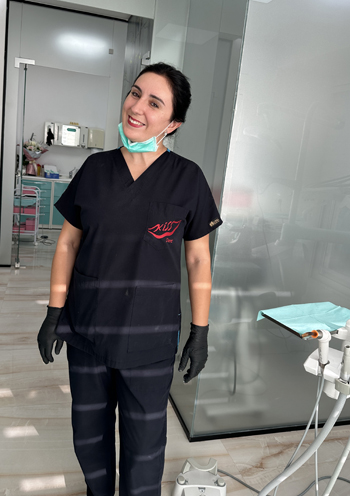
After reading lots of five-star reviews, I decided to go for it and have a cleaning, as well as have my veneers replaced (they were very old). And it didn’t hurt that the cost was about 1/4 of my quote from back home.
Steve also had a cleaning and a couple of old fillings redone.
It’s All Good
The office was very modern, clean, and professional. The staff was well-trained and super friendly. Dr. Alba has a degree in dentistry and had advanced training in Europe. The office was as advanced (or more advanced) than any I’ve visited in the U.S.
A New Smile

So now I’m grinning from ear to ear as we make our way here in Tirana. Thanks, Dr. Alba & staff at KissDent!
Around Town
The violence and oppression that Albania endured over the last century remained visible in the communist block-style, gray, high-rise buildings dotting the city. Years after communism fell, Tirana still reflected its rough past.
2000: A Facelift
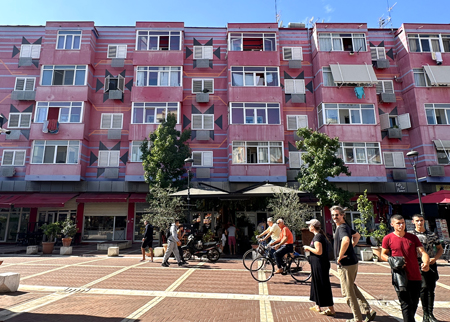
Enter Edi Rama, who locals elected as the mayor of Tirana in 2000. Rama, a former artist, looked to art to help rejuvenate the gloomy, communist-style city.
His idea was to paint the buildings in lively colors and designs in order to “revive the hope that had been lost in my city.”
The reaction was positive and immediate. After revealing the first painted building, crowds gathered to see it, causing traffic jams.
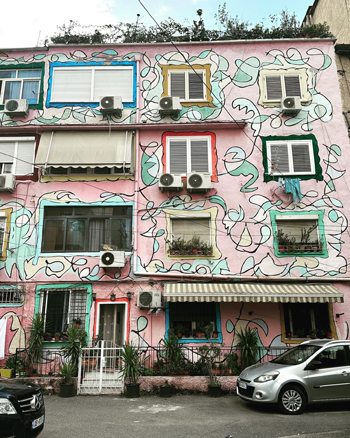
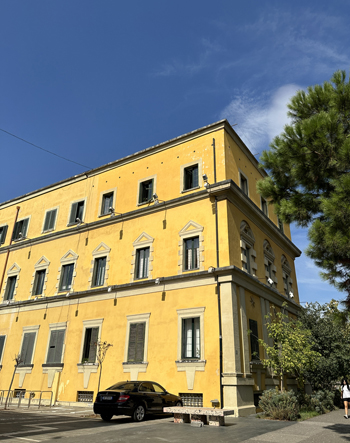
But EU officials, who controlled the funding for Tirana’s rebuilding, opposed Rama’s project. They objected to the splashy colors because it did not meet EU standards. But Rama refused to compromise — even when those officials threatened to block the city’s funds.
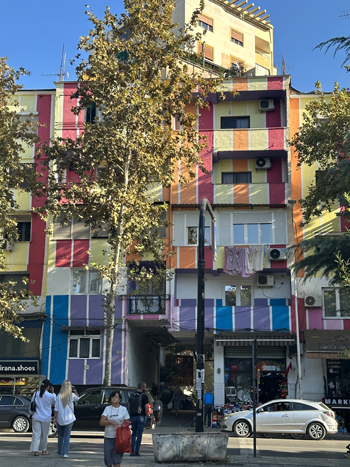
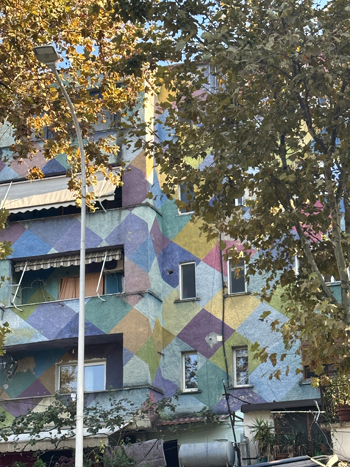
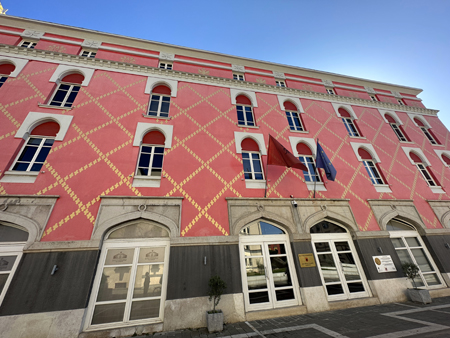
We saw many examples of these lively and colorful buildings throughout our stay. Some are quite faded by now, but you can still see how lovely they were at one time.
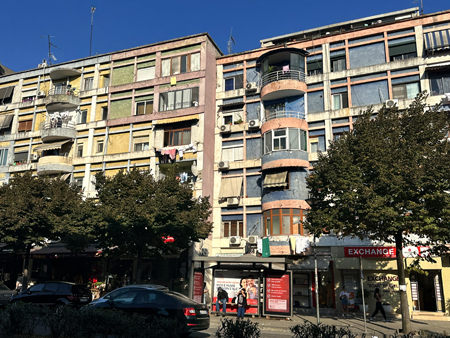
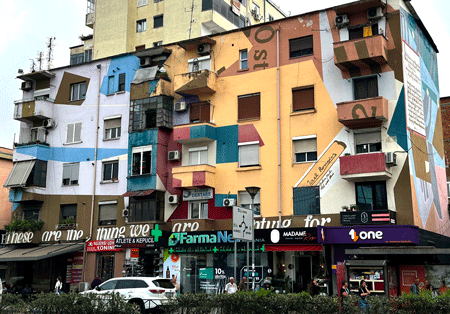
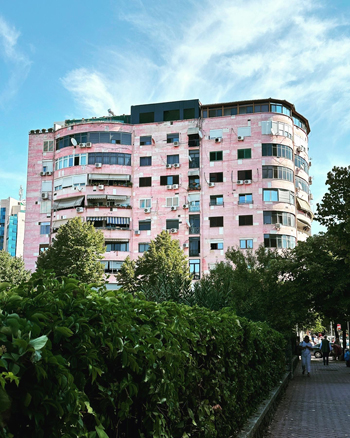
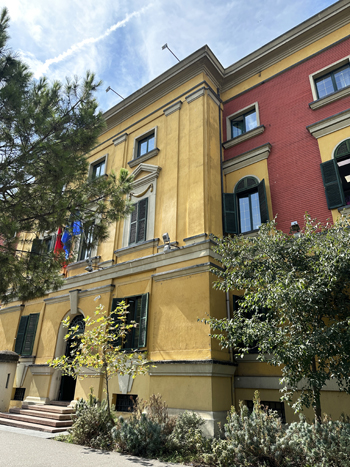
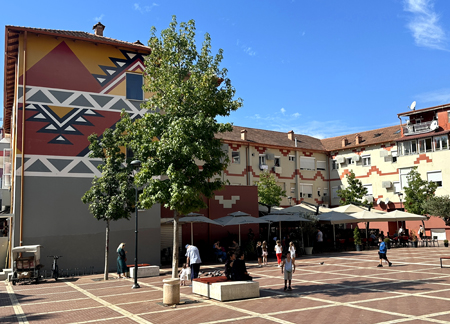
Sorry, Not Sorry
Thankfully the mayor stood steadfast, stating that “..we have enough grey to last us a lifetime.”
The campaign to revive the capital through architectural art continued. The colors not only changed the look of the city but also the attitude of the people.
A Daytrip to Vruje
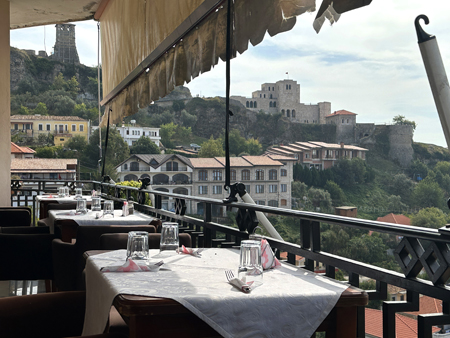
One day we made our way, via bus, to Vruje, a medieval town about an hour away from Tirana. It was a lovely small town, albeit a bit touristy.
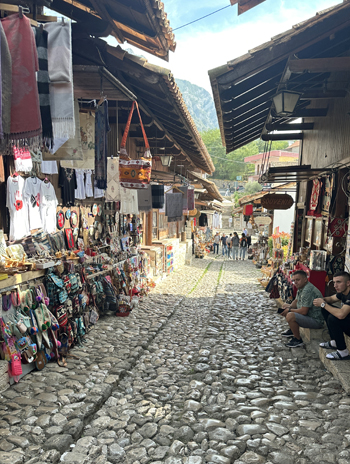
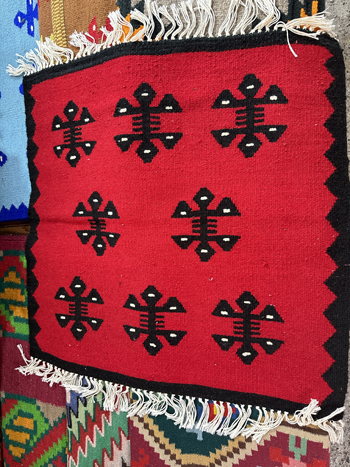
The cobblestone winding walkways had lots of shops all selling the same wares. There was enough silver jewelry, lace items, wool handmade slippers, and kilims (Albanian rugs) to sink a ship.
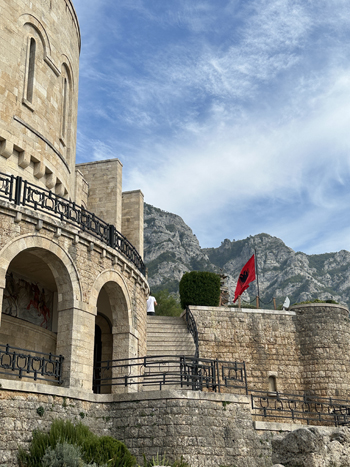
Skanderbeg
At the top of a hill in town is the Vruje Castle. The Castle was the home and headquarters of the feudal lord and military commander, Gjergj Kastrioti, commonly known as Skanderbeg.
It is here that Skanderbeg became a hero of Albania and fought off the Ottomans in the 1400’s.
The Final Furgon
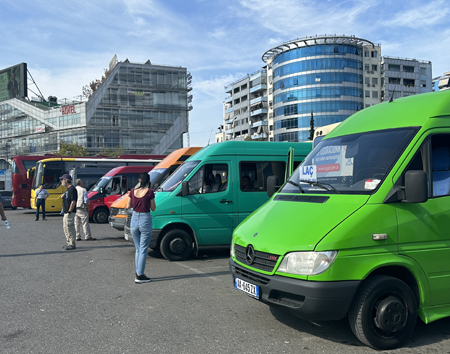
We were a little sad to be on our last furgon (mini-bus) in Albania. The furgon to Vruje held about 8 people. It included a very smiley Albanian man who kept trying to reassure us of something – we’re not sure what. Maybe he wanted us to feel secure in our destination? It’s hard to know, but he was very sweet and happy.
Our furgon was scheduled to leave at 11 am, and, as it turns out, so were a bunch of others. So when the clock struck 11 am, we, along with a mixture of about eight to ten other furgons and full-size buses, started our engines.
The problem was we were in a huge, open expanse of a parking-lot. There were no parking spaces, lines, or directional arrows. And there was just one exit that we were all gunning for. The cacophony of horns, engines, and yelling was like an unorganized dance of drunk, crazy people.
It was hard to believe, but no furgons or buses collided. Somehow, we each made our way out of the lot and were on our way. Just another day for the furgon drivers.
Wins and Losses
Wins
Bravo! Bravo! There’s such a strong Italian influence here in Tirana – and so many Italians. This results in a huge WIN because there are so many excellent Italian restaurants about.
The Dude! What else can I say?
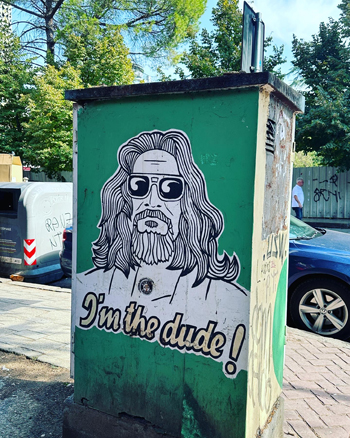
Books Galore: After reading about the very high illiteracy rate during the communist time, it was a delight to see books for sale on so many street corners.
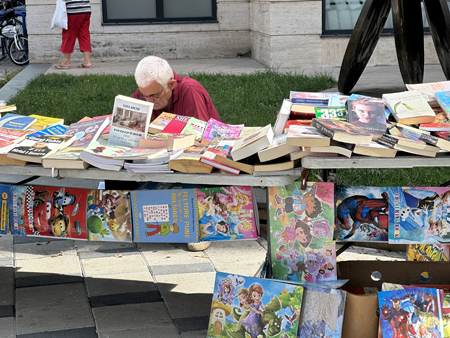
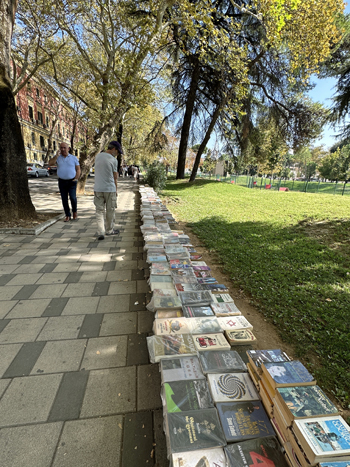
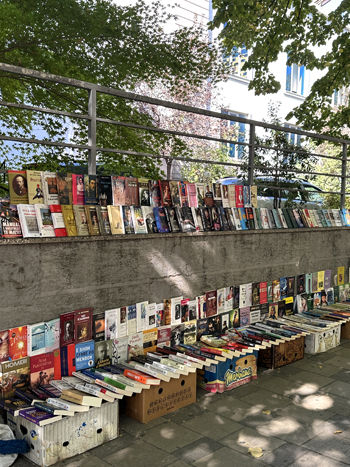

Friends in the park: Seeing the same group of cute old men gathered in the park day after day warmed my heart.
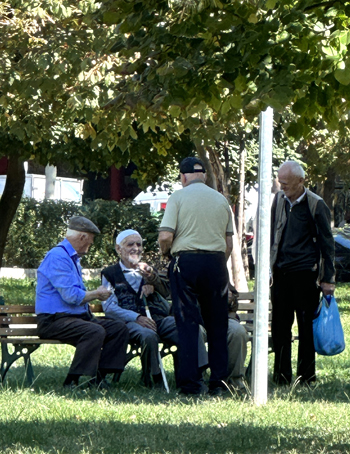
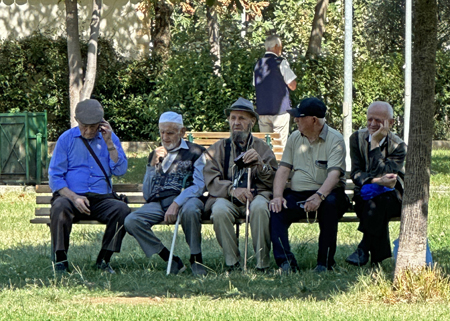
Losses
COVID anyone? Walking across town for 45 minutes to have Steve take a COVID-19 test was a bummer, but thankfully it came back negative. He had quite the sore throat, and we needed to be sure it was safe for him to go to the dentist. And it was kind of interesting to spend time in an Albanian hospital, I suppose.
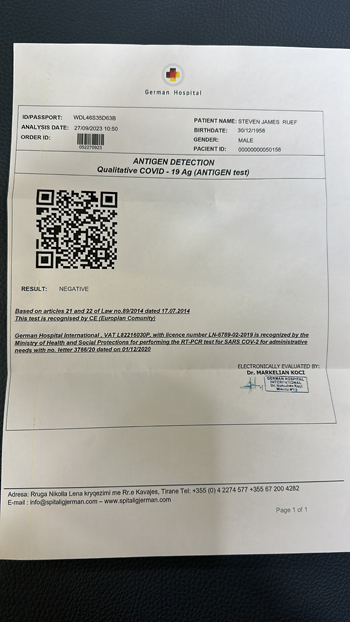
Toilet Paper fun: Yes, it’s day 38 of no tp allowed in the toilet. And what’s worse? We are not in a hotel now, so we (ok, actually Steve), has to take out our bathroom trash out to the street receptacle every few days. Yuk. Thanks Steve!
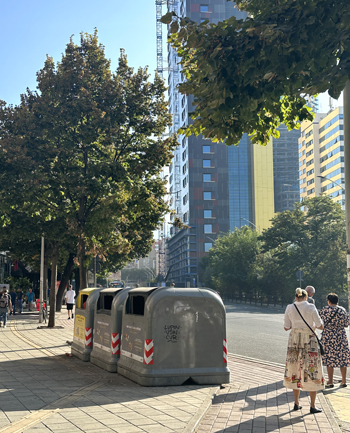
than the ones on our street
Saying Goodbye
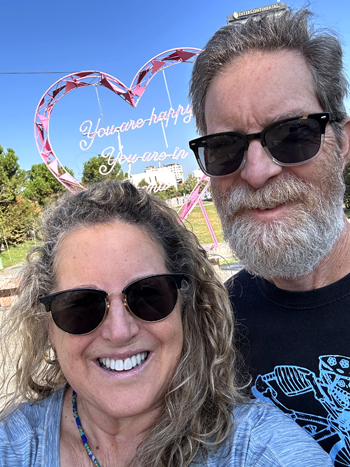
We’ve loved exploring Albania and are sorry to say goodbye! From the beautiful coast, to the mountain town of Berat, to the capital of Tirana – it’s been incredible.
We had read that Albania has been discovered by tourists, and the beach towns are having a hard time handling their newfound fame. I would say that it does appear to be the case.
The hospitality industry is very new to Albania, and some coastal towns are seeing unchecked and unplanned growth and building. And along with the sudden expansion and popularity, come some other challenges, like garbage, infrastructure issues, and a fairly steep learning curve on how to handle it all.
It will be interesting to see how the popular towns handle the increase in tourism over the next few years. Apparently things have changed enormously already over the past 4-6 years, and not always for the better.
That being said, the beaches and towns of Sarande and Himare were lovely in many ways. And the people were friendly and gracious.
Tirana was probably my favorite though. She stole my heart just a little bit. I hope to see her again.